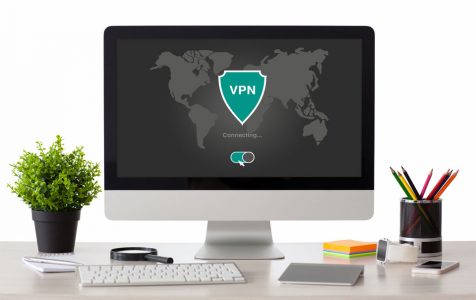Do you ever wonder how, while browsing the Internet, you suddenly see ads that are directly related to your recent online search or activity? Because that’s not a coincidence. Advertisers connive with publishers to record information from you unknowingly as you go online via cookies, and no they are not delicious. Online ads are just an example, for the most part, they are harmless. However, the idea that someone somewhere can spy on your online activities is enough a reason to do something about your online security and one way to do this is to learn how to use VPN.
A Refresher: What is VPN?
We’ve already talked about VPN a couple of times, but just to refresh our minds, VPN stands for virtual private network. It works by creating a secure and private tunnel from the device to the server or the World Wide Web. The data sent over this tunnel is encrypted and cannot be intercepted by third parties. By using a VPN, your privacy is protected, and you can be anonymous as you browse the web. You can also disguise your location, allowing you to access content that may be blocked in your region. For instance, if you are in the UK but connect to the Web via a US server, then you can access, Netflix US.
How to Install VPN on Mac: Using Your VPN Provider’s Mac Software
Reliable VPN providers, such as Outbyte VPN and NordVPN, typically make their services available and usable through secure apps. After you’ve selected and subscribed to a VPN plan, you’ll likely be given access to the app for Mac. The steps may vary from client to client, but generally, they are as follows:
- Register an account with your VPN provider.
- Choose your plan. You may save a significant amount if you subscribe to an annual or semi-annual plan, but if you just want to try out the service first, go for the monthly plan.
- Once your account is verified, proceed to download the VPN on Mac.
- Install the app. Usually, this will involve simply double-clicking on the downloaded app file and following specific instructions.
- After installation, run the app. Sign in using the account details you registered with the VPN provider when prompted.
- Allow admin privileges when asked. Note that this is normal for VPN apps to require this, as they will have to tweak your Mac’s network settings.
- In the app’s main page, select the VPN server you want to connect to, then click CONNECT, GO, or a similar command.
How to Install VPN on Mac: Manual Configuration
The macOS actually comes with a built-in VPN client that can support PPTP, L2TP/IPsec, and IKEv2 VPN protocols. Using a VPN app is generally more secure and hassle-free, but using IKEv2 also makes for a good option. Basically, IKEv2, as well as the other options mentioned above, can be set up even without a third-party VPN. For the purpose of this guide, we will set up an IKeV2 VPN configuration, the details of which will typically be provided by your VPN service provider.
- Go to System Preferences > Network.
- Click the + button.
- The interface configuration dialog will pop up. On Interface, choose VPN. On VPN Type, choose IKEv2. On Service Name, input your desired name for the VPN. For instance, VPN-IKEv2-Home.
- On the next window, fill in the server details with the settings provided by your VPN provider. The required info you will need is Server Address and Remote ID
- Click on Authentication Settings and enter necessary data provided by your network administrator.
- Click OK, then click Connect.
And that’s how easy it is to install and connect to a VPN on your Mac. Got any questions or feedback? Leave them in the comments section below.
